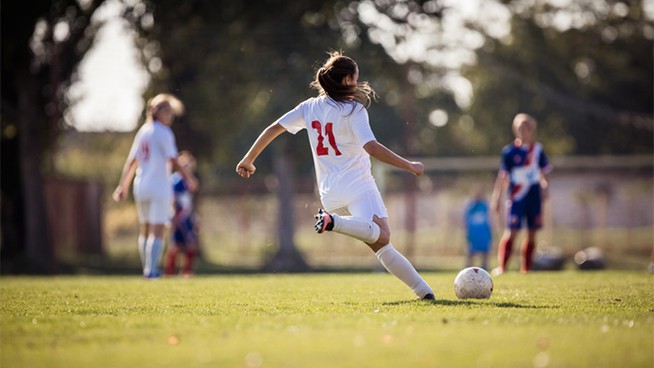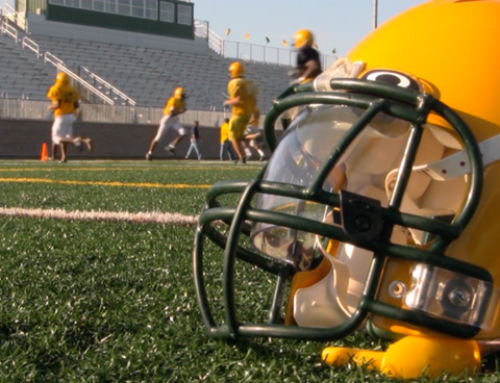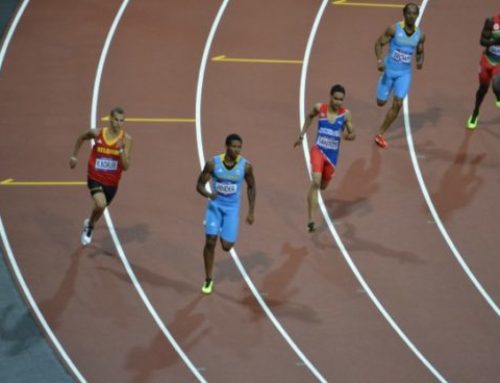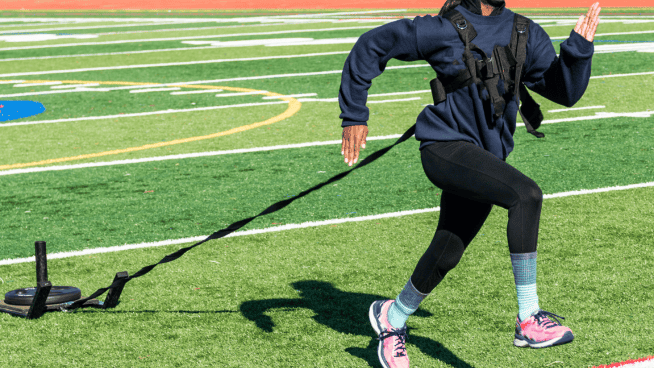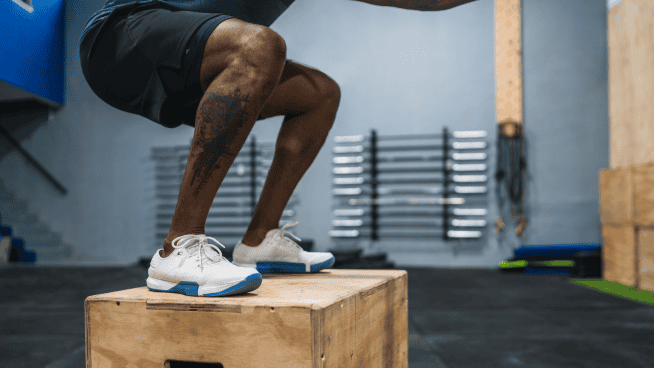How the Cable Machine Can Help You Get Faster
![]()
Speed training requires more than just running fast. The right work in the gym can be the difference-maker.
The Single-Leg Cable Knee Drive is a great exercise to add to your strength routine for many reasons. Here are three:
- It works stability of your stance leg at the ankle, knee and hip, all essential areas for sprinting greatness. Improved stability also improves agility and decreases the possibility of getting knocked off your feet.
- It builds hip flexor strength, which is important for the drive phase of sprinting.
- It reinforces form; for example, you can practice your arm position and drive phase.
How-to (see video for demonstration and coaching points)
- Set up a cable at the low setting and use a cable strap attachment around your ankle. This is your drive leg. If you do not have access to a functional cable, you can use bands or tubing by attaching it to something sturdy.
- Step forward into a split-squat stance so there is tension on the cable. This is not a full-depth position of the Split-Squat/Lunge stance. Your front (stance) leg is bent at a maximum of 45 degrees.
- Make sure the knee of your stance leg is in line with your foot. Do not allow your knee to collapse inward. The arm on the side of your drive leg should be at cheek level, elbow bent at 90 degrees. Keep the arm of your stance leg at hip level.
- Drive up the knee of your back leg. At the same time, drive the opposite arm to cheek height and bring the arm of your stance leg back to hip level, using an arm action of “cheek to cheek.” The foot of your drive leg should be in dorsiflexed position (toes to top of sneakers). Return your drive leg back to starting position, pause for 1 second, and repeat. Perform all repetitions on one side before changing sides.
Sets/Reps: 2-3×8-12 during your warm-up. You want the weight to be a bit challenging but not so heavy that it slows you down or messes up your form. Think “controlled and drive”—explosive yet stable. This exercise will not make your hip flexors sore, but it will make them strong.
RECOMMENDED FOR YOU
MOST POPULAR
How the Cable Machine Can Help You Get Faster
![]()
Speed training requires more than just running fast. The right work in the gym can be the difference-maker.
The Single-Leg Cable Knee Drive is a great exercise to add to your strength routine for many reasons. Here are three:
- It works stability of your stance leg at the ankle, knee and hip, all essential areas for sprinting greatness. Improved stability also improves agility and decreases the possibility of getting knocked off your feet.
- It builds hip flexor strength, which is important for the drive phase of sprinting.
- It reinforces form; for example, you can practice your arm position and drive phase.
How-to (see video for demonstration and coaching points)
- Set up a cable at the low setting and use a cable strap attachment around your ankle. This is your drive leg. If you do not have access to a functional cable, you can use bands or tubing by attaching it to something sturdy.
- Step forward into a split-squat stance so there is tension on the cable. This is not a full-depth position of the Split-Squat/Lunge stance. Your front (stance) leg is bent at a maximum of 45 degrees.
- Make sure the knee of your stance leg is in line with your foot. Do not allow your knee to collapse inward. The arm on the side of your drive leg should be at cheek level, elbow bent at 90 degrees. Keep the arm of your stance leg at hip level.
- Drive up the knee of your back leg. At the same time, drive the opposite arm to cheek height and bring the arm of your stance leg back to hip level, using an arm action of “cheek to cheek.” The foot of your drive leg should be in dorsiflexed position (toes to top of sneakers). Return your drive leg back to starting position, pause for 1 second, and repeat. Perform all repetitions on one side before changing sides.
Sets/Reps: 2-3×8-12 during your warm-up. You want the weight to be a bit challenging but not so heavy that it slows you down or messes up your form. Think “controlled and drive”—explosive yet stable. This exercise will not make your hip flexors sore, but it will make them strong.
[cf]skyword_tracking_tag[/cf]

